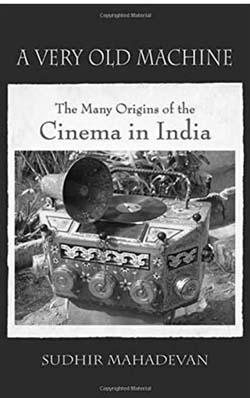The picture on the cover of Sudhir Mahadevan’s book is a Bioscope; a techno-material ‘assemblage’ that he will argue is emblematic of film cultures in India. Writes Mahedevan: The Bioscope is the combination of the past and the present. It represents the key symbol of early cinema brushing against new and not so new media. It is the refashioning of an ‘optical device’ of still pictures predating the cinema in the 19th Century, into a source of moving images with the help of home viewing technology and digital formats. Finally, the assemblage performs and demands a public space and publicity for its viability. The embedded temporalities of just a single contraption capture, I think, the complexity of India’s visual cultures especially those centred on the cinema (p. 3).
These ‘very old machines’, says Mahadevan, not only remind us of the coexistence of old and new technologies but also serve as ‘mnemonic devices’ that invite us to return to the historical moment when these machines were new. A central thesis of Mahadevan’s argument is that the obsolescence of old technology, as in the case of the Bioscope, is ‘obviated’ through innovations thereby allowing for continuity amidst ruptures. The ‘obviation of obsolescence’ therefore poses a challenge to theories that suggest a radical break with the past. ‘No technology dies a predictable death in India. Nor does it undergo an ordinary birth’, maintains Mahadevan.

